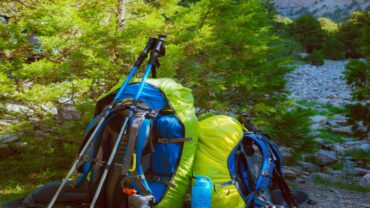Getting ready for the Annapurna Base Camp trek is exciting but needs some planning. We’ll share simple tips to help you enjoy this adventure safely and happily.
However, with its rugged terrain and high altitude, it’s essential to prepare adequately to ensure a safe and enjoyable experience. In this guide, we’ll delve into the key factors to consider when tackling the Annapurna Base Camp trek, equipping you with the knowledge to conquer this adventure with confidence.

Steps for tackling Annapurna Base Camp Trek Difficulty
Understanding the Terrain: The Annapurna Base Camp trek encompasses diverse landscapes, from lush forests and terraced fields to rocky terrain and icy glaciers. Each stage of the trek presents its own set of challenges, demanding varying levels of physical endurance and mental resilience. By familiarizing yourself with the terrain beforehand, you can better prepare for what lies ahead and adjust your training regimen accordingly.
- The Annapurna Base Camp trek covers a variety of terrains, including lush forests, terraced fields, rocky paths, and icy glaciers. Each section of the trek presents unique challenges, such as steep ascents, rocky terrain, and potentially hazardous weather conditions.
- It’s essential to familiarize yourself with the route and its terrain characteristics to prepare mentally and physically. Consider studying maps, reading trekking guides, and researching online resources to understand what to expect at each stage of the journey.
Altitude Considerations: One of the most significant challenges of the Annapurna Base Camp trek is the altitude. As you ascend to higher elevations, the air becomes thinner, making it harder for your body to breathe and function optimally. To mitigate the effects of altitude sickness, it’s crucial to acclimatize properly by ascending gradually and allowing your body time to adjust. Additionally, staying hydrated, maintaining a steady pace, and listening to your body’s signals are essential for a safe ascent.
- As you ascend to higher elevations during the trek, the air becomes thinner, resulting in decreased oxygen levels. This can lead to symptoms of altitude sickness, including headaches, nausea, dizziness, and fatigue.
- To prevent altitude sickness, it’s crucial to acclimatize gradually by ascending slowly and taking regular breaks. Hydration is also key, so drink plenty of water throughout the trek. Listen to your body and be prepared to adjust your pace or take extra rest days if necessary.
Physical Preparation: Preparing your body for the rigors of the Annapurna Base Camp trek is paramount to your success. Incorporate cardiovascular exercises, such as hiking, running, and cycling, into your training routine to improve endurance and stamina. Strength training exercises, focusing on your legs, core, and upper body, will help build the muscular strength needed to tackle steep ascents and descents. Remember to start slow and gradually increase the intensity and duration of your workouts to avoid overexertion and injury.
- Physical fitness plays a significant role in enjoying the Annapurna Base Camp trek. The journey involves long days of walking, often on challenging terrain, which requires endurance, strength, and stamina.
- Prioritize cardiovascular exercises such as walking, hiking, running, or cycling to build endurance and cardiovascular health. Strength training exercises, focusing on the legs, core, and upper body, help improve muscular strength and stability, essential for navigating steep ascents and descents.
Packing Essentials: Packing wisely can make all the difference in your trekking experience. Essentials include sturdy hiking boots with ankle support, moisture-wicking clothing layers, a durable backpack, and a reliable sleeping bag. Don’t forget to pack plenty of snacks, water purification tablets, sunscreen, and a first-aid kit to stay nourished, hydrated, and protected from the elements. Additionally, consider investing in trekking poles for added stability and support on uneven terrain.
- Packing the right gear is essential for a successful and comfortable trekking experience. Consider the climate, terrain, and duration of the trek when selecting your gear.
- Essential items include sturdy hiking boots with ankle support, moisture-wicking clothing layers to regulate body temperature, a durable backpack to carry your gear, and a warm sleeping bag for cold nights. Don’t forget to pack snacks, water purification tablets or filters, sunscreen, and a basic first-aid kit for emergencies.
Cultural Sensitivity: The Annapurna region is home to diverse ethnic communities, each with its own rich cultural traditions and customs. Show respect for the local culture by learning a few basic Nepali phrases, dressing modestly, and adhering to local customs and etiquette. Engage with the local community, interact with fellow trekkers, and embrace the opportunity to learn from different perspectives. Remember, fostering mutual respect and understanding enriches the trekking experience for everyone involved.
- The Annapurna region is home to diverse ethnic communities, each with its own unique culture, traditions, and customs. It’s essential to show respect for the local culture and customs during your Annapurna Base Camp trek.
- Learn a few basic phrases in Nepali to communicate with locals, dress modestly to show respect, and adhere to local customs and etiquette. Engage with the local community respectfully, ask for permission before taking photos, and be mindful of your impact on the environment.
Getting ready for the Annapurna Base Camp trek is fun and important. By knowing the trail, getting fit, packing smart, and respecting the local culture, you’ll have an amazing adventure in the Himalayas. So get ready, enjoy the journey, and make unforgettable memories along the way!
By paying attention to these details and adequately preparing for the challenges ahead, you’ll enhance your Annapurna Base Camp trek experience and create unforgettable memories amidst the stunning Himalayan landscape.
Please Follow Us For more Updates :
Website : Base Camp Trip



Comment (0)